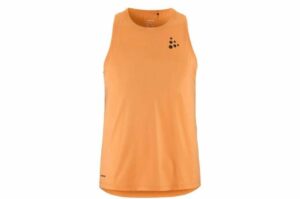Barefoot running: What’s old is new
Blogger Rory Gilfillan discusses how barefoot running is not a new phenomenon, rather an old technique used for building strength and improving form.
In the late 1990s Brooks unleashed the Beast. If overpronation was the scourge of the runner than the Beast, weighing in at a hefty 14 ounces, promised to solve the problem by locking the foot in what amounted to a virtual plaster cast. One extreme would inevitably lead to another and it wasn’t long before the pendulum swung back and many runners would start eschewing footwear altogether.
Despite what Chris McDougall wrote in the best seller Born to Run, barefoot running isn’t anything new.
Long before magic Mexican running tribes, the barefoot trend had come and gone. It first reached international attention when Ethiopian Abebe Bikila broke the tape barefoot in the 1960 Olympic Marathon. By the 1970s, running barefoot was a significant subset of a movement that was, for the most part, propelled by beaten down waffle-trainers held together by Shoe Goo.
Most sneakers in the infancy of the first running boom weren’t much more than flimsy soles attached to nylon anyway and before Nike there weren’t many options beyond adidas track shoes and Asics’ Tigers.
If anything, running barefoot was the sublime expression of a minimalist culture that hadn’t heard of pronation much less cushioning or support and, if they had, couldn’t care less.
But the 1990s changed that and as Canadians woke up to the idea that they didn’t know how to run any more, shoes began to appear to cure afflictions that people didn’t know they had. Ironically, bigger and more supportive shoes may have purportedly helped people correct their gait but did little to mitigate a myriad of other chronic injuries that plagued runners.
Vin Lananna, track coach at Stanford University was instrumental in convincing Nike, that runners, in order to avoid injury, needed less shoe, not more. Years of having his athletes train barefoot regularly on the campus golf course had helped persuade him that runners who ran regularly without shoes were less prone to stress fractures, plantar fasciitis and a host of other overuse injuries. Running barefoot, Lananna believed, developed stronger feet and ankles that were, in turn, less prone to damage.
However, what worked for a top-level Stanford track athlete, when applied to the masses, was bound to lose a great deal of nuance. If a carbon-fibre hockey stick could make a beer-league hockey player feel better about their game without actually improving it than the strange-looking five toe shoes would, if not change the sport, potentially generate more interest in it.
Don’t fear pronation
Pedorthist, Kinesiologist and owner of Accuped, Richard Daley, agrees. “For the most part, what we are dealing with is a trend,” he said. “However, there is an element of truth behind this fad.
“The shoe industry, as a whole, had over-corrected pronation with shoes built up too much on the medial side. The notion that pronation is a bad thing is wrong. Pronation is what stops you from falling or makes up for instabilities within the kinetic system. If we remove the compensation for instabilities without treating the underlying reasons, then the mechanics will get worst.”
High-intensity running in the form of hill workouts and interval training increases the probability of injury. Barefoot running according to Daley is, “another form of training stimulus,” that can be effective but isn’t without risk.
The main issue is whether or not the benefits outweigh the risks and Daley feels that the jury is still out on this question.
“Running is a skill that must be learned and re-learned as we get older. Barefoot running can help promote higher turnover rates and prevent overstriding but other drills can also help achieve this.”
Daley believes that almost anyone can become a runner but that wearing shoes is still the best and quickest way to acclimatize to the sport.
“It just takes time and patience. Are they going to adapt faster [to running] with shoes? That’s the question, and I think the answer would be ‘yes.'”
Running barefoot may have less to do with function or performance than with a Spartan puritanism that has always formed the historical foundation of the sport. As running shoes became bigger, more colourful and less practical – a back-to-basics movement became inevitable.

